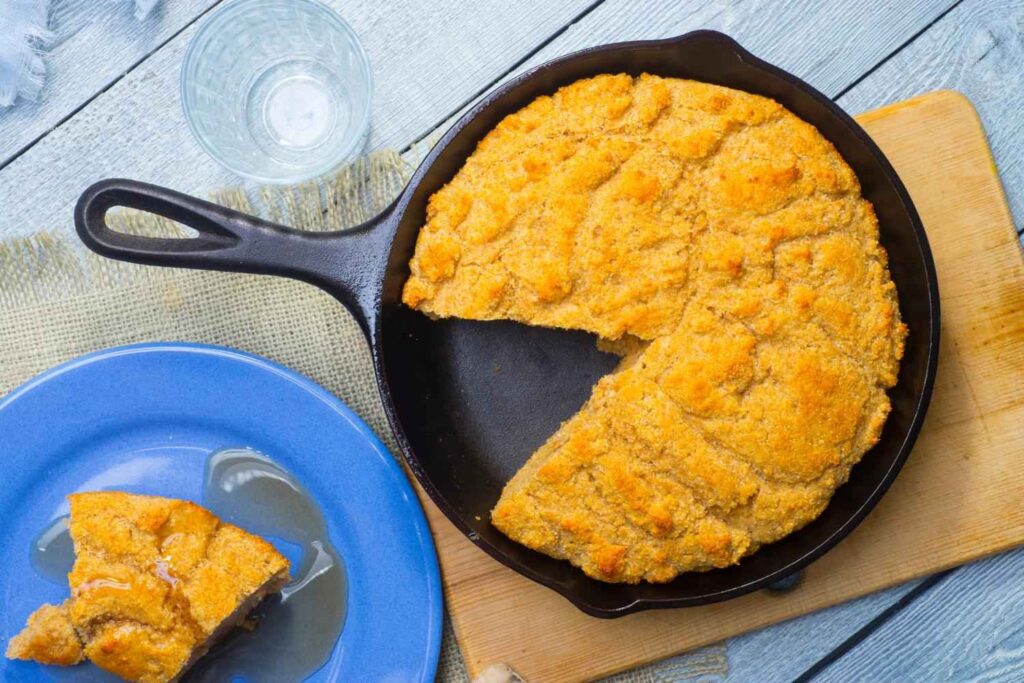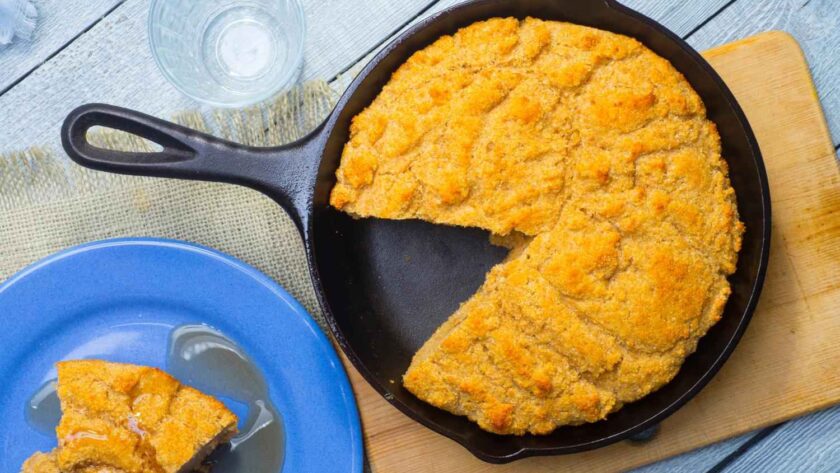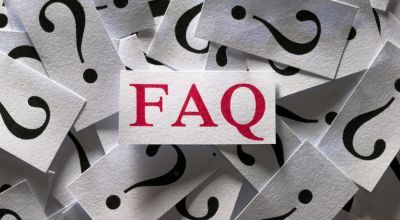Let’s talk about that golden, crispy, edge-of-the-pan cornbread crust—you know the one. The part that crackles just a little when you cut into it, holds together when you pick up a slice, and tastes like it got kissed by butter.
The secret? It’s not just the recipe—it’s the pan. More specifically, a hot cast-iron skillet.
Whether you’re making a simple side or loading your batter with cheese and poblanos like I do in my Poblano Stuffed Cornbread, preheating your skillet is the key to getting that crave-worthy crust.
Why Preheat Your Skillet?
When your skillet is already hot before the batter goes in, the bottom layer of cornbread starts cooking instantly. That quick sizzle forms a golden crust while the inside stays moist and tender.
It’s like pan-searing your cornbread—only upside down.
And Yes, That Butter Sizzle Matters
You know that moment when you swirl butter into a hot skillet and it bubbles up like it’s saying thank you? That’s not just for show.
That sizzling butter:
- Creates a nonstick base
- Infuses the crust with flavor
- Helps caramelize the cornmeal, which gives it that nutty, toasty finish
This is why, in my skillet cornbread recipe, I always melt butter in the skillet, pour it into the batter, and then heat the pan again with more butter before pouring the whole thing in. Layers of flavor + the perfect texture = total win.

How to Preheat Your Skillet (Without Burning It)
- Oven Method
Pop your cast iron in the oven while it preheats (at 400–425°F). When the batter is ready, carefully pull it out, swirl in some butter, and pour the batter right in. - Stovetop Boost
If you’re short on time, heat the skillet over medium heat on the stove first. Then transfer it to the oven when the batter goes in for even baking.
Either way, you want that pan hot enough that you hear a light sizzle when the batter hits it. Not smoke-show hot—just warm and welcoming.
Why Cast Iron Specifically?
Cast iron holds heat like a champ. Unlike aluminum or glass, it keeps that heat even once you add the batter, which means:
- A uniform bake
- A more developed crust
- No soggy middle (yes please)
It also goes from stove to oven without blinking—perfect for recipes like my cheesy, poblano-packed cornbread that start with a quick stovetop melt and finish in the oven.
Can You Skip Preheating?
Technically? Sure.
Should you? Nope.
Skipping the preheat means your batter just sits there, soaking into the pan while it slowly warms. You’ll end up with:
- A pale, soft bottom
- Less structural integrity (especially if there’s cheese or veggies involved)
- Zero wow factor
So yeah, it’s worth the extra 5 minutes.
Preheating your cast-iron skillet isn’t just a nice-to-have—it’s one of those small kitchen habits that makes a big difference. Especially when you’re working with loaded batters or want to impress with texture, it’s a game changer.
Whether you’re baking cornbread, roasting veggies, or searing chicken thighs, that hot skillet sets you up for crispy, caramelized, flavorful success.
Want more simple ways to level up your kitchen game? Check out:

